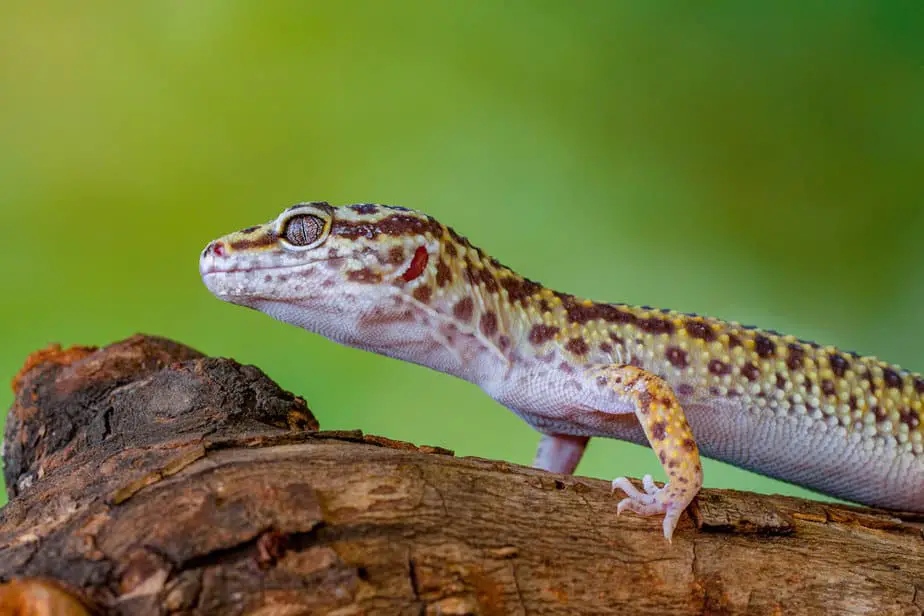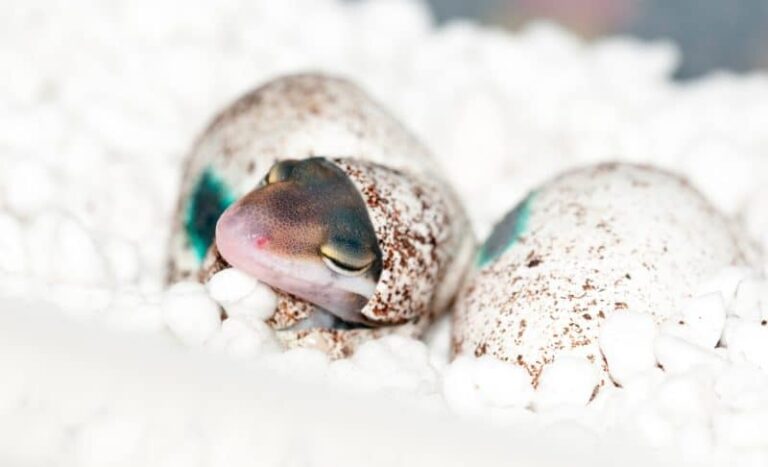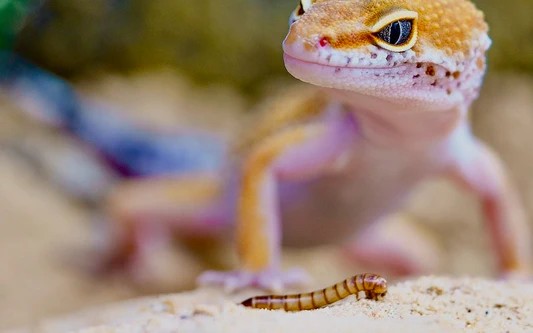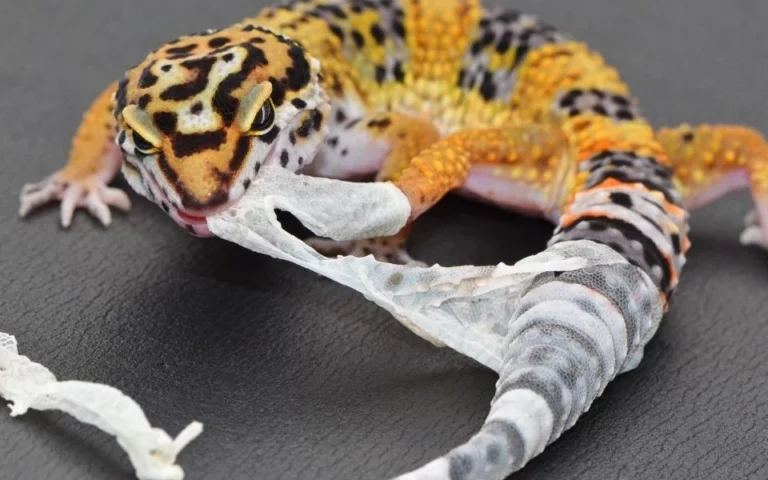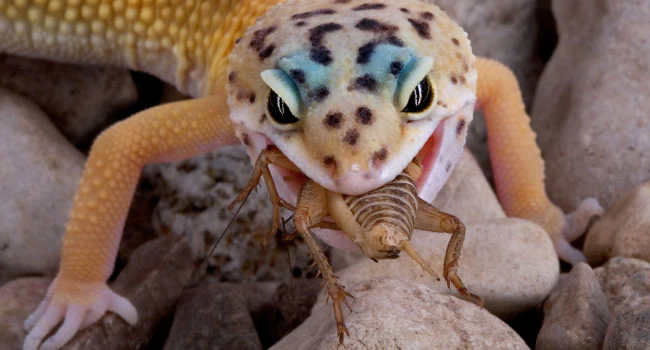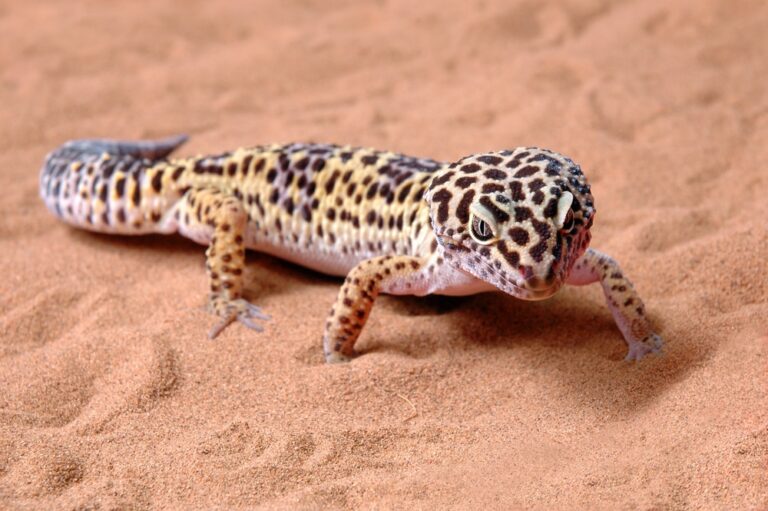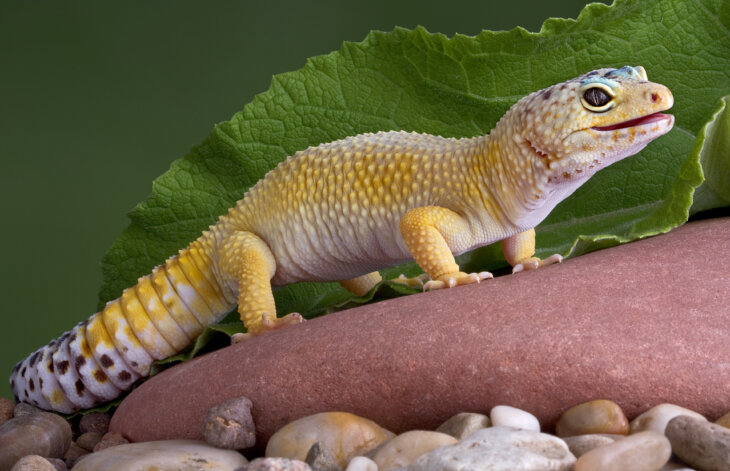Are Leopard Geckos Nocturnal: Secrets Of The Night
As I gazed into the dimly lit terrarium, my curiosity piqued by the enigmatic creature within, I found myself pondering a question that has fascinated reptile enthusiasts and novice pet owners alike: Are leopard geckos truly nocturnal?
The answer is Yes, they are mostly active at night, but they also come out during dawn and dusk to soak up some UV and prepare for their day or night ahead.
Also, with their striking appearance and captivating demeanor, have long been a favorite among reptile lovers.
Together, we will peel back the layers of darkness and reveal the fascinating truths about leopard geckos and their intriguing lifestyles.
Understanding Leopard Gecko Sleeping Patterns
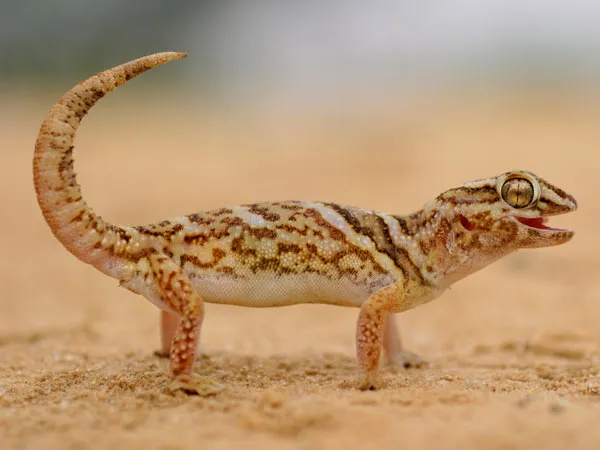
Leopard geckos are creatures of the night, spending most of their day in hiding. They avoid direct sunlight to stay safe from predators. Typically, they snooze for around 12 to 13 hours during the day. However, when the night falls, that’s when they come to life, becoming active and alert.
Whether it’s dry or humid, geckos like to curl up in their shelters when they sleep. But sometimes, you might find them lounging openly in their enclosures, which is a sign that they feel secure and content.
However, if you notice your leopard gecko snoozing for more than 15 hours throughout the day and night, it could indicate health issues like poor nutrition or parasites.
Since it’s hard to gauge their nighttime activity, it’s best to monitor their behavior and health during the day. Leopard geckos are cold-blooded, so if the nights get too chilly, you might need to add some warmth to their shelters.
You can do this by using a space heater in the room or placing a ceramic radiant heater above the enclosure. Just be careful not to let the temperature inside the enclosure go above 80 degrees Fahrenheit on the cooler side, as excessively high temperatures can harm them.
Do Leopard Geckos Need Light at Night?
No, leopard geckos do not require light at night. In fact, they are primarily nocturnal creatures and are most active during the night. Providing them with continuous light at night can disrupt their natural behavior and sleep patterns.
Leopard geckos do benefit from a regular day-night cycle, so it’s essential to provide them with a natural light source during the day, such as indirect sunlight or a reptile-specific UVB bulb, to maintain their overall health and well-being. However, at night, they should be kept in a dark or dimly lit environment to mimic their natural habitat and allow them to rest comfortably.
Can Leopard Geckos See in the Dark?
Yes, Leopard geckos can see in the dark because their eyes are designed to work well in low light. Their eyes are on the sides of their heads, giving them a wide view of their surroundings. This helps them hunt and move around at night in their natural habitat, which is often dark.
As pets, they keep this night vision, so they can still see well in dim light. So, yes, leopard geckos can see in the dark.
Optimal Lighting and Temperature for Leopard Gecko Care
Lighting: Incorporating a light source within the gecko’s enclosure helps regulate their day and night cycle. This lighting not only supports the mental well-being of the gecko but also stimulates its appetite.
Moreover, during the summer, it’s advisable to provide 14 hours of light per day to mimic the ideal day length. In the winter, you can replicate seasonal changes by reducing the light to 12 hours daily. Having a light in the enclosure also enhances the owner’s experience, as leopard geckos occasionally come out to bask during the day, allowing for observation when there’s adequate illumination.
UV Light: Natural sunlight produces three types of ultraviolet light: UVA, UVB, and UVC. UVC is blocked by the Earth’s atmosphere and destroys DNA. However, most animals, including reptiles, rely on UVA for vision and UVB for crucial aspects of their health, such as vitamin D synthesis and calcium metabolism.
Temperature: They need different temperatures in their tank to stay healthy. The warmest spot, where they bask, should be around 94-97°F. The warm hide, another cozy spot, should be 90-92°F. The cooler part should be 70-77°F. At night, it’s okay if it gets as cool as 60°F. Letting the temperature drop at night is better for their long-term health than keeping it warm all the time.
Humidity: Leopard geckos are native to desert environments and thrive in relatively dry conditions. The ideal daytime humidity level for them falls between 30% and 40%, matching the typical humidity of most homes. To maintain the appropriate humidity level, ensure proper ventilation within the terrarium.
However, it’s important to note that they require higher humidity when shedding their skin. Molting complications are a common health issue among these geckos. Instead of increasing humidity throughout the entire enclosure, which can be detrimental to the gecko’s health, provide a humid hide with moist substrate and place it on the warm side of the tank. The humidity within this hide should be maintained at 70 to 80%, facilitating a healthy shedding process.
Where Do Leopard Geckos Sleep?
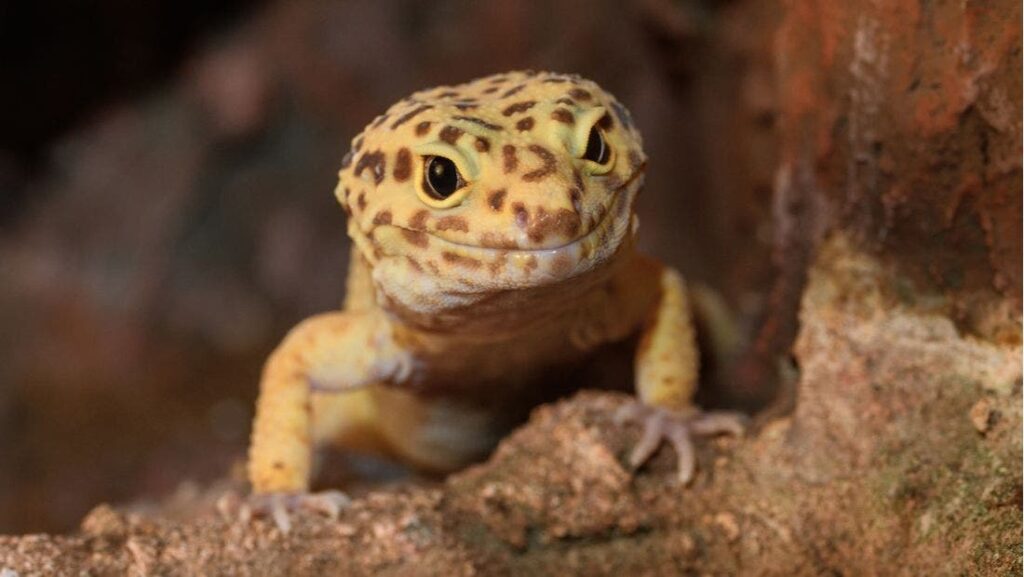
Leopard geckos typically sleep in concealed and sheltered spots within their enclosure. They prefer secure and dark places where they can rest undisturbed during the day, as they are primarily nocturnal creatures. Common sleeping spots for them include hide boxes or shelters provided in their habitat.
Furthermore, these hide boxes can be made of various materials such as wood, plastic, or stone, and they offer a safe and cozy environment for the gecko to rest. Providing multiple hide boxes at different temperature zones within the enclosure ensures that they can choose the most comfortable spot to sleep based on their temperature preferences.
Also, it’s important to create a suitable and comfortable sleeping environment for them to mimic their natural behavior and promote their well-being.
FAQs
1. Do leopard geckos sleep at night?
Yes, leopard geckos are primarily nocturnal animals, which means they are most active during the night and tend to sleep during the day.
2. Why is my leopard gecko active during the day?
If your leopard gecko is active during the day, it could be due to stress, improper lighting, or disturbances in its environment. Normally, they prefer nighttime activity.
3. Do I leave my leopard gecko’s light on at night?
No, it’s generally recommended to turn off all lights at night for leopard geckos. They need a natural day-night cycle to thrive, so provide darkness at night.
4. Can leopard geckos be in the dark at night?
Yes, leopard geckos should be in a dark or dimly lit environment at night to mimic their natural habitat and promote healthy sleep patterns.
5. Do leopard geckos need 2 lights?
Yes, Leopard geckos typically require a heat source (e.g., heat pad) and a UVB light if kept in captivity. Two separate lights can provide the necessary heat and UVB radiation.
Final Words:
In my exploration of leopard geckos, I’ve come to a clear conclusion: These creatures are indeed nocturnal. But sometimes they are crepuscular. Through my observations and research, it’s become evident that they are most active during the night.
Additionally, their preference for the nighttime is fascinating. Their unique adaptations, like their special eyes and heat-sensing abilities, are clear indicators of their nocturnal nature. It’s amazing to see how they thrive and navigate in the darkness, relying on their keen senses to hunt and explore.
Through this journey of discovery, I’ve not only learned more about leopard geckos but have also developed a deeper appreciation for the diversity of life on our planet. Lastly, These geckos remind me that our world is full of incredible creatures, each with its own unique way of life. Understanding and respecting their nocturnal habits is crucial for their conservation and for preserving the wonder of the natural world.

